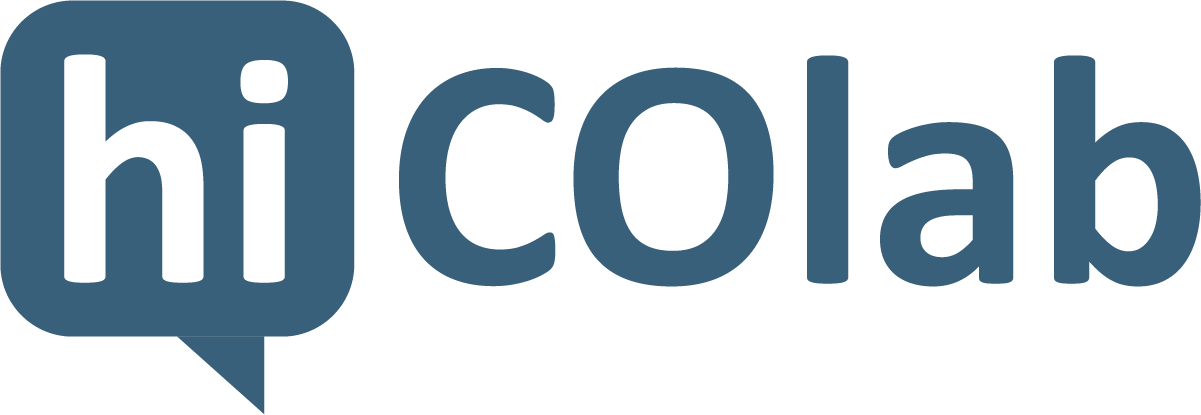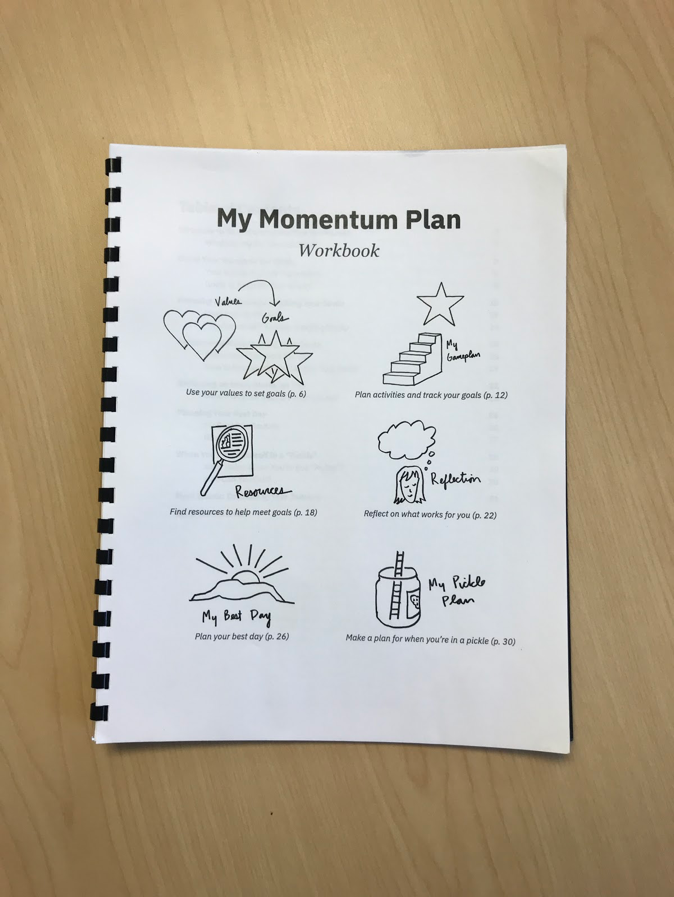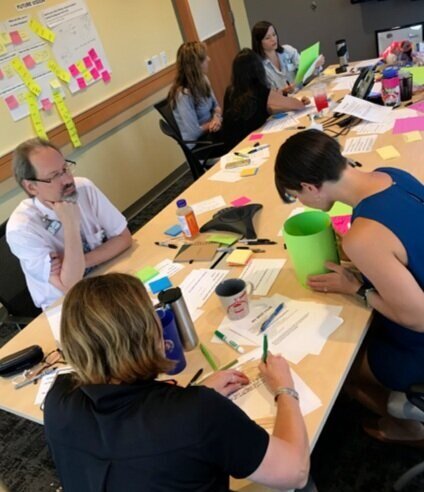Our work
Helping patients create a roadmap for living well with chronic pain
We designed tools to help patients plan their next steps and continue the progress they made in an 8- to 10- week intensive, integrative pain management program at a new University of Vermont Medical Center chronic pain clinic.
The Challenge
The UVM Medical Center Comprehensive Pain Program (CPP) brings an 8- to 10-week holistic, integrative approach to improving the lives of patients with chronic pain. Many of these patients have tried everything they can to treat their chronic pain, and pain has affected all aspects of their lives from their daily activities to their relationships to their entire identity. In sharp contrast to many of their other experiences in the healthcare system, CPP patients feel cared for and experience a mindset shift during the program.
hiCOlab partnered with CPP to help understand the context, processes, and experiences surrounding the patient journey before, during, and after CPP to identify patient needs and how we might better support their progress.
The Work
hiCOlab co-created the Momentum Plan with patients, CPP providers and staff, and primary care providers — a patient-driven roadmap for continuing the progress patients made during CPP.
The concept for the Momentum Plan emerged from interviews and design workshops with patients and providers. We explored how to ease the difficulty patients face sustaining motivation and behavior change when they no longer have the consistent support of the program, a prominent theme surfaced by our research.
We worked with staff to help review and critique prototypes created through patient and provider interview and research.
We conducted numerous interviews, observation sessions, and participatory workshops with chronic pain patients, CPP staff and providers, and primary care providers to uncover insights and co-create with the people at the heart of our design opportunity.
Our research helped us understand what needs the program was meeting for patients and what needs they still had. Patients talked about how the program meets participants where they are with a team of supportive and accepting care providers and a community of other patients who understand what they’re going through. They told us what a difference this made to them. But they also said they were worried about leaving the program. They were worried about losing the support of the group and finding motivation on their own. They were worried about coming up with a clear plan for what to do next and keeping themselves accountable. They didn’t want to backslide.
Patients weren’t alone in their questions about what should come next; the several primary care providers we spoke to also wanted recommendations for care plans and supporting these patients after CPP.
These were the needs that we designed the Momentum Plan to address. We developed a list of design criteria to guide the creation of the roadmap based on those needs.
We created this Momentum Plan workbook according to the design criteria that came out of our research.
Design Criteria
Easy for patients to understand
Easy to complete mostly on their own
Easy to reference or refer back to
Help to remind them of their goals
Help them come up with activities and a plan to work on their goals
Help keep them accountable
Help them get unstuck from time to time
Celebrate their progress
Something they could share with their support system
Equipped with these insights, we went to work creating a pain management roadmap with the CPP team and patients. We asked them to think about what this roadmap would look like, what it would have in it, and how it would work. We asked them to come up with ideas that responded to the patient needs we identified in our research. We prototyped our ideas, refined them, and tested them with patients to see what they found helpful and would want to use.
The Impact
With patient feedback, we created final versions of two tools to serve as a roadmap for patients: the Momentum Plan Workbook and the My Game Plan poster. The workbook, based on CPP’s curriculum, chronic pain management best practices, and ideas from patients and CPP staff themselves, walks patients step by step through documenting their goals for living better with pain and creating their plan. The poster gives patients a visual reminder of their goals and a place to track their progress.
“You can look and think, ‘I did that today, I can feel good.”
CPP is currently piloting these tools, providing them to patients as part of their program materials and checking in on their progress over the course of the program. Patients have had positive feedback about the tools so far, especially the activity tracker and calendar, but we know long term behavior change and chronic pain management are complex. The most important next step will be to collect more feedback over time from patients about how these tools impacted them after their time in CPP and what they still need. In the future, we hope to continue exploring the use of these and similar tools to see what they can teach us about how we might innovate care for chronic conditions.
Staff participated in a design sprint to co-create solutions to meet patient needs.
Research Insights
INSIGHT 1: Chronic pain patients face many barriers to accessing treatment, including their own attitudes and ability to engage.
INSIGHT 2: Patients experience a fundamental shift in mindset during the Comprehensive Pain Program, which sets the stage for lasting behavior change.
INSIGHT 3: Patients need ongoing support and resources to continue the progress they made in the program.
INSIGHT 4: Many primary care providers struggle with managing chronic pain patients.
Prototyping the patient roadmap with the CPP team.
“I’ve gone dot crazy on the calendar. I hate going a day without putting at least three on. I bought more because I ran out.”
“Crossing things off and seeing the progress add up is like an incentive.”
One of the final prototypes was a poster that patients could use to plan out activities and track their progress toward their goals.
“I’m not a poster guy, but I like that this is a very visual reminder that tells you whether you did the things you said you would.”








